Call it Easter, Holy Week, Semana Santa, or the literal translation of Saints week… the Spanish take the week of mourning seriously. It starts on Palm Sunday — the day we arrived. We saw priests wandering the streets with parishioners (in Torremolinos) but nothing else to indicate that it was the beginning of Semana Santa in Spain.
Holy Monday, Tuesday and Wednesday were spent in Granada. Here we had our first taste of the procesiones de cofradias, in which nazarenos (the hooded men — some barefoot and in chains), penitentes, and elaborate pasos (floats) all play an important role. During the day we visited sites and in the evenings stood with people from far and wide who came to watch the parades, listen to music and song.
Each of the pasos are carried by costaleros who spend months preparing for this one moment. They are blind and deaf for the parade — and are led by a capitaz who guides them by tapping the paso or by hitting the ground with a stick.
Thursday was the day of the Rom parade in Sacomonte. Thursday is considered a more joyful day and as the paso is carried up into the hills of Sacromonte, people are loud, joyful and light-hearted at times. I’m not sure if this is significant, but the robes of the nazarenos changed from white to purple, orange, and yellow on this day.
We spent Friday and Saturday in Sevilla, where the most important and solemn of the processions occur. Sunday is considered a day of celebration and various cities and towns around Spain celebrate in their own unique way. More about these three days in later posts.
For her class, La Niña and I put together a video that outlines our experiences on the different days of Semana Santa. Enjoy!

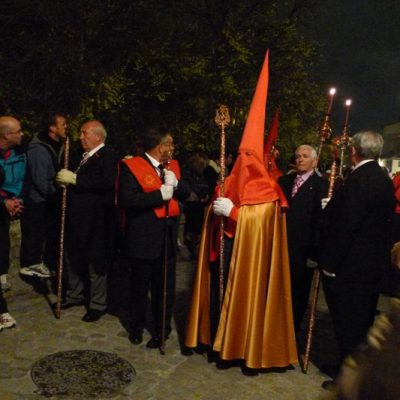
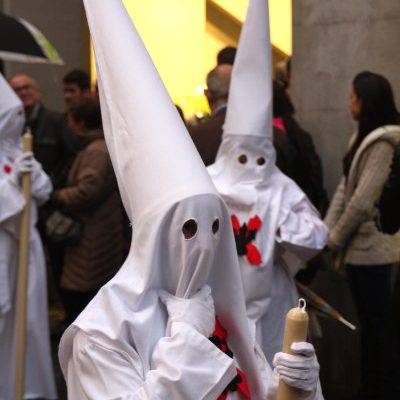
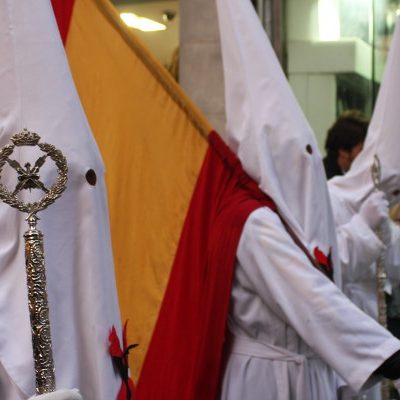
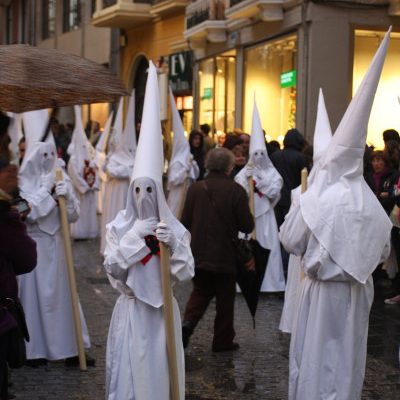
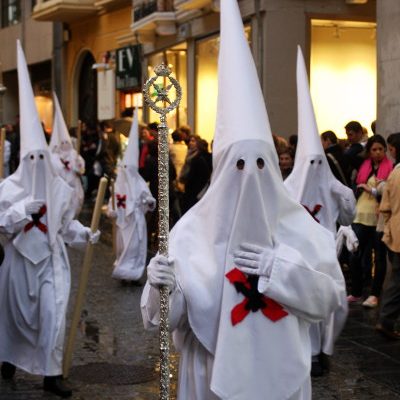
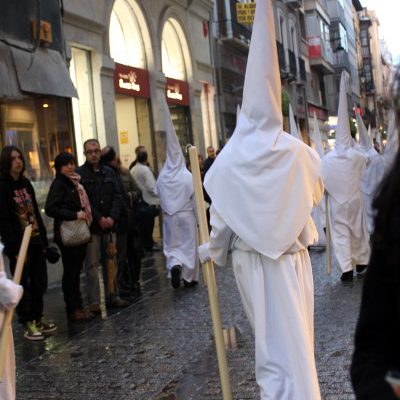
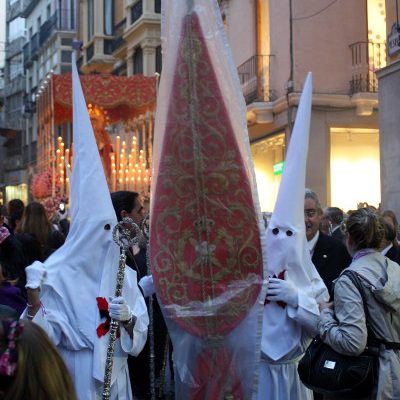
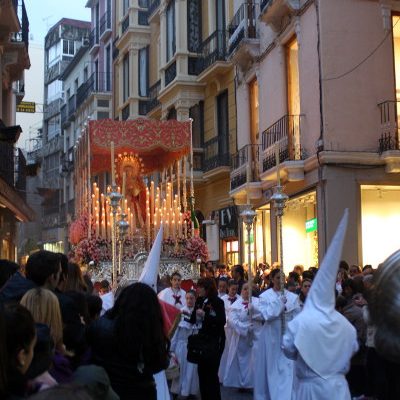
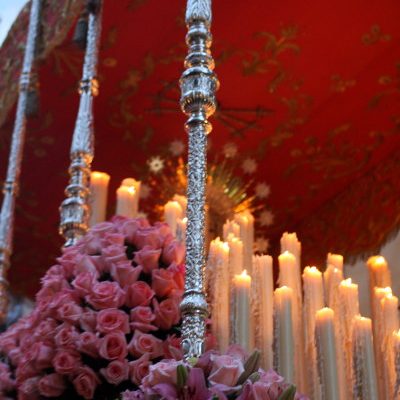
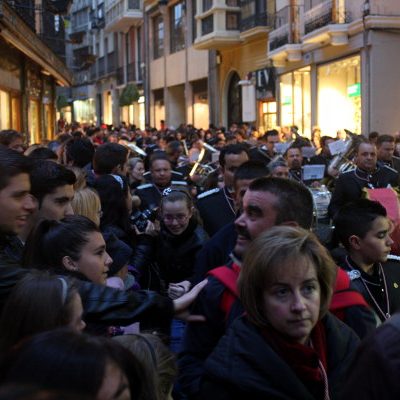
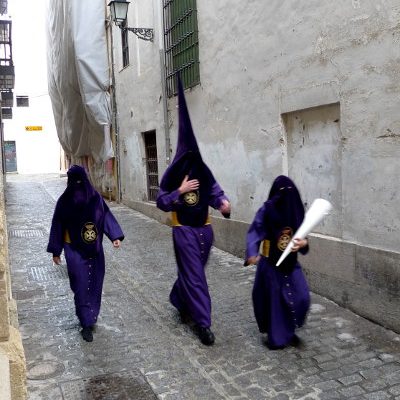
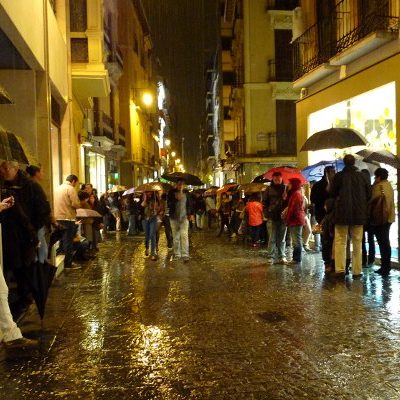
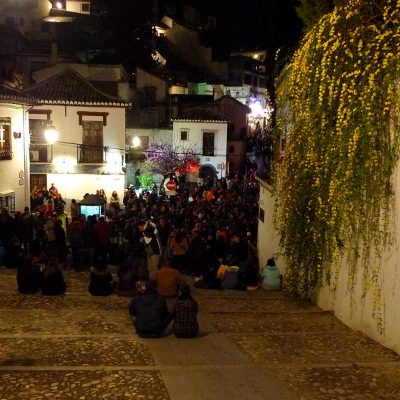
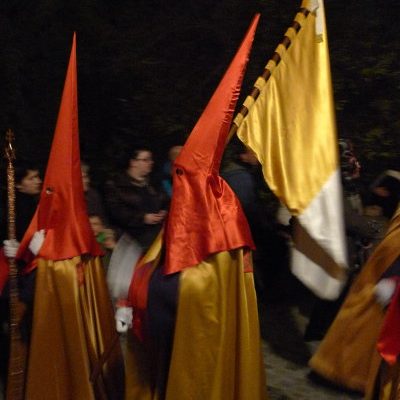
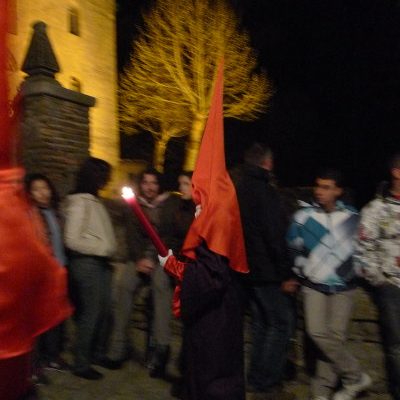
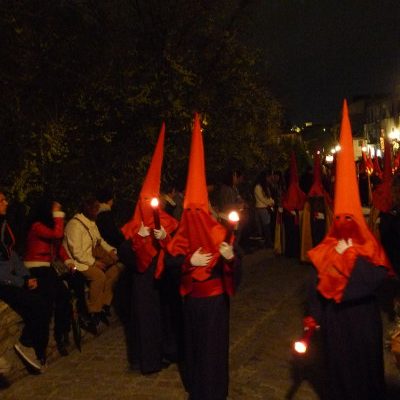
1 comment on “Semana Santa”Add yours →